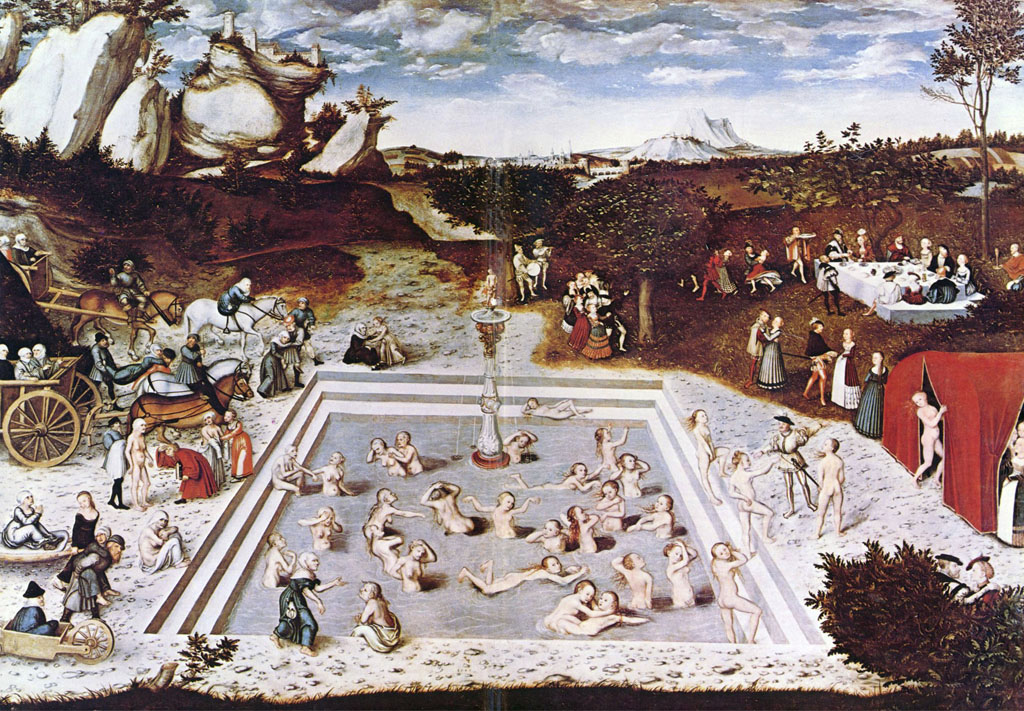18-02-19 // RETIREMENT UTOPIANISM – INTERVIEW WITH DEANE SIMPSON

The “Fountain of Youth” by Lucas Cranach the Elder, 1546
Bernd Upmeyer talked to Deane Simpson, who is an architect, urbanist and educator teaching and researching at The Royal Danish Academy of Fine Arts, School of Architecture, Copenhagen, where he is professor and co-leader with Charles Bessard of the masters program Urbanism and Societal Change. Simpson received his doctorate from the ETH Zürich, masters degree in architecture from Columbia University in New York and Bachelor of Architecture with Honours from The University of Auckland. His research addresses contemporary forms of socio-spatial transformation at the intersection of demographic change and processes of modernization, globalization, neo-liberalization and welfare state transformation. He is the author of Young-Old: Urban Utopias of an Aging Society published by Lars Müller Publishers in 2015. The conversation took place via phone on February 18, 2019.
Aging Society
Bernd Upmeyer: In 2015 in an interview with Amanda Kolson Hurley for the Journal of the American Institute of Architects you mentioned that you started thinking of the impact of an aging society on cities during a trip with some friends from university to St. Petersburg, Florida, in the 1990s. Could you explain this experience a bit? What became obvious and intriguing?
Deane Simpson: When we were studying at Columbia in New York, a group of colleagues and I traveled around the southern states of the US. One evening we stumbled across a bar in St Petersburg in Florida. This was a strange experience. We ended up in a quite intense party environment that was populated by people who appeared to be well over sixty years of age. We sensed that we had entered into a kind of closed society, with special social codes. We felt very unwelcome because we clearly did not fit in there. I got the impression that there was a certain ideal of youthfulness prevailing, but in this case, a kind of youthfulness based upon the absence of youth. It was interesting to see how the concentration of this age-group within this space supported particular social behavior. I also became curious as to how some of the senior-dominated cities in Florida seemed to produce their own realities of urban life.
BU: You were one of the contributors to MONU’s very early issues from the years 2007 and 2008, namely issue #6 – Beautiful Urbanism with an article called “Beyond Kitsch” and issue #9 – Exotic Urbanism with “Urbanism of the Permanent Tourist”. In both articles a lot of ideas are already mentioned that were later, in 2015, published in your book “Young-Old: Urban Utopias of an Aging Society”, about which we will talk more later. The topic of an aging society seemed to have played already a role in them and especially in “Beyond Kitsch” the topic of theme parks was very important. How would you describe the relationship of these articles to your book?
DS: “Beyond Kitsch”, which I wrote with Dirk Hebel, focused on an interpretation of theming and its effects, looking at a hotel complex at Disneyworld. Theming is a recurrent topic in the book – and an understanding of how the entertainment-industrial complex produced space became relevant in understanding how those logics are unfolded specifically in retirement communities. The second article you mentioned, “Urbanism of the Permanent Tourist”, which looked at how retirement urbanism draws on spatial formats of tourism and stretches out time in places like Costa de Sol or Florida, was more directly drawn out in the book…
… the complete interview was published in MONU #30 on the topic of Late Life Urbanism on April 15, 2018.
Title: Retirement Utopianism
Project: Interview with Deane Simpson
Date: February 2019
Type: Commissioned interview
Topic: Late Life Urbanism
Organizer: MONU
Status: Published
Publications: MONU #30, P. 4-12
Interviewer: Bernd Upmeyer